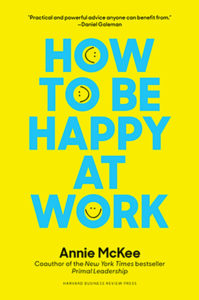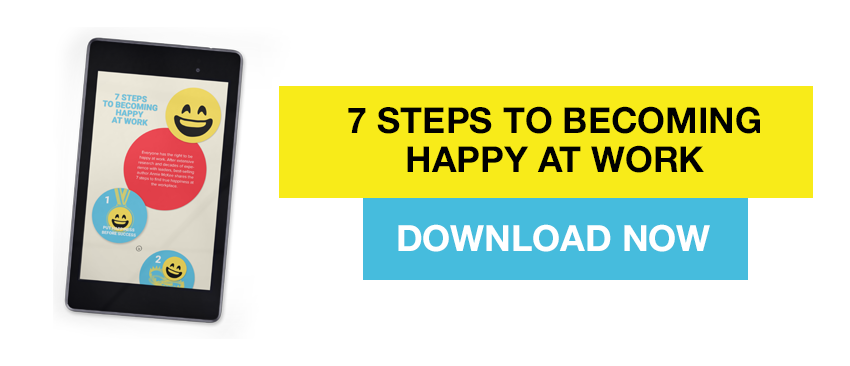Then Start with a Vision for Your Whole Life!
People often ask whether leadership can be learned. It is the old nature vs. nurture question: Are people born to be good leaders, or do they develop leadership abilities over time? Both are true. Some characteristics of good leadership—the tendency to be optimistic, for example—are traits we are probably born with.
But inborn characteristics are few, and even most of these can be enhanced and leveraged (or conversely, underutilized). Far more of the elements of effective leadership are learned. Of course, family experiences in early childhood, school, community and work all shape our abilities to build and sustain relationships, guide and manage ourselves and influence others.
A True Leader Creates Energy for Change
We learn critical leadership competencies throughout life. But these abilities never become set in stone: they can and do change, and by intentionally attending to our own development, we can become better leaders.
But how and when do people change? People learn and develop when what they want to change matters deeply and will affect them both personally and professionally.
In other words, people can become better leaders, and can change long-held patterns of behavior. But we have to want to change, and the path we chart for ourselves has to be personally meaningful.It’s not just about leadership development. In fact, professional growth without personal transformation is impossible.
Changing one’s self isn’t necessarily easy and it doesn’t usually happen quickly. This is because leadership abilities are tied to patterns of behavior related to self image, relationship skills, and even worldview.
These are deep-seated, and in many cases we have behaved the same way for so long we are no longer fully aware of what we do or why we do it. But when we have a picture of a future we really want, we discover a path for change and the energy and enthusiasm necessary to sustain the process of reinventing ourselves. This is why creating a clear and compelling life vision is the first and most important step in becoming a resonant leader.
Engage in the Process of Intentional Change*
Significant and sustainable change occurs only when people engage in a process of intentional change. The process is really a series of discoveries about oneself: one’s hopes, dreams, current situation, plans for the future and supportive relationships to help along the way.
It goes like this: when people(or organizations for that matter) really want to change and develop, we need to engage in a process that will enable us to first reconnect with who we are and what is most important to us. This gives us the energy and the motivation to look closely at what is currently working for us, and what is getting in our way.
Here are four steps to becoming a resonant leader in order to spark desire and create energy for change:
- Imagine and articulate an ideal self: who could I be if I were at my very best, living and working effectively, fully and happily?A meaningful vision of ourselves and our future engages our desire to move toward that future, and gives us the courage to try. You will find that the positive feelings you experience when you consider an image of a meaningful, viable future will help to power and sustain your drive for growth and change. And, notably, our hunger to achieve our desired future helps us stay engaged, resilient and flexible in the face of setbacks or disappointments.
- Develop a clear sense of your real self: who I am today, my strengths and weaknesses, and how I impact others. Assessing one’s real self can be done in many ways, but it requires that one reflects deeply and honestly and engages with others to share perceptions and to receive feedback.
- Create a plan to address gaps between the real and the ideal and to build on one’s current strengths.Often we need to learn new skills or expose ourselves to different situations in order to achieve our dreams. The process of getting from the real to the ideal requires a plan. Research indicates that people plan for the future in different ways, so these plans must reflect not only how people think about the future, but how they tend to act when moving toward it.
- Experiment and practice. Long-lasting behavioral change happens only when people have opportunities to try new behaviors and develop new habits in relatively safe and nonjudgmental environments.This means that we need other people: people who care about us, are interested in our development, and who will tell us the truth. We learn best in the context of supportive relationships, so for a change process to work,we need to deliberately include other people who can help us maintain focus on our learning agenda.
The Time Is Now
Leaders are in positions to make big gains and big mistakes. You impact a lot of people—in your teams, institutions, and communities. You can make a difference when you choose to reach for your personal best, to inspire and energize people, to call them to action, and to reach for a brighter future. None of this happens by accident. Change—real change—happens when we have the courage to reach for our dreams, and then face up to the fact that maybe we aren’t going to achieve those dreams unless we, ourselves, change how we are going about leadership and life.
*My good friend and coauthor Richard Boyatzis has been studying and writing about Intentional Change for decades. Check out more in Becoming a Resonant Leader
Excerpted from Resonant Leadership, Harvard Business Review Press, 2005

You Deserve to Be Happy at Work
Based on extensive research and decades of experience with leaders, How to Be Happy at Work deepens our understanding of what it means to be truly fulfilled and effective at work and provides clear, practical advice and instruction on how to get there―no matter what job you have.
